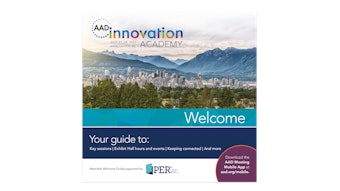More focus on cancer prevention is needed
Otis Brawley, MD, MACP, honored with the Lila and Murray Gruber Memorial Cancer Research Award and Lectureship.

Otis Brawley, MD, MACP, Bloomberg distinguished professor of oncology and epidemiology at Johns Hopkins Medicine, was honored with the Lila and Murray Gruber Memorial Cancer Research Award and Lectureship during Sunday’s P151 – Plenary.
Dr. Brawley asked: How do we provide adequate high-quality care to populations that so often do not receive it?
He pointed to the overemphasis on screening and treatment at the cost of a reduced emphasis on prevention and risk reduction and quality of screening.
Risk factors such as tobacco, diet and physical activity, alcohol, and UV radiation continue to drive the proportion and number of cancer cases. He said of those, tobacco addiction continues to be the leading cause of cancer in the United States. The cancers associated with tobacco use include lung, larynx, mouth, esophagus, throat, bladder, kidney, liver, stomach, pancreas, colon and rectum, cervix, and acute myeloid leukemia.
Even though cigarette use has declined overall over the last few decades, he said it is not necessarily declining as much with those without a college education.
“We’ve had a 31% drop in cancer deaths over 26 years,” Dr. Brawley said.
Still, 600,000 Americans continue to succumb to cancer annually in the U.S.
“About 42% of all cancers are preventable,” Dr. Brawley said. Stopping smoking, reducing obesity, improving nutrition, and getting more physical activity all play a role in helping patients live long, healthy lives.
“Education is incredibly important for cancer death rates,” Dr. Brawley said. College graduates or people who get some college are less likely to die from cancer-related causes, he said.
“If all Americans had the cancer death rate of college-educated Americans, 22% or 132,000 deaths per year would not occur,” he said. He said that number would require no new science except the science of how to get people good care from prevention to treatment.
Visit AAD DermWorld Meeting News Central for more articles.
